Let's say we have the same tree of this question
A, D, E and H are 'special' nodes belonging to the class :Special. Here is the tree definition
@prefix : <http://example.org#> .
:orgA :hasSuborganization :orgB, :orgC, :orgD.
:orgB :hasSuborganization :orgE, :orgF.
:orgE :hasSuborganization :orgG.
:orgG :hasSuborganization :orgH.
:orgA a :Special .
:orgD a :Special .
:orgE a :Special .
:orgH a :Special .
I'd like to get the same tree of the starting one but with only special nodes. A kind of summary of the starting topology. E.g., Expected output:
A
_|_
| |
E D
|
H
I'd like to get that with a SPARQL query. My starting point:
@prefix : <http://example.org#> .
select ?node ?node2 (count(?mid) as ?distance) where {
?node :hasSuborganization* ?mid .
?mid :hasSuborganization+ ?node2 .
?node2 a :Special .
{
select * where {
<http://example.org#orgA> :hasSuborganization* ?node .
?node a :Special .
}
}
} group by ?node ?node2
In this way I get the distance of each couple of special nodes in the tree.
How can I filter just the super-sub relations (i.e., A-D,A-E,E-H)? I believed that filtering the rows with the minimum values in my result-set was enough. Actually, it fails if one :Special node has :Special descendants at different height (e.g., distance(A-D) = 1, distance(A-E) = 2).
Probably I need something different.
